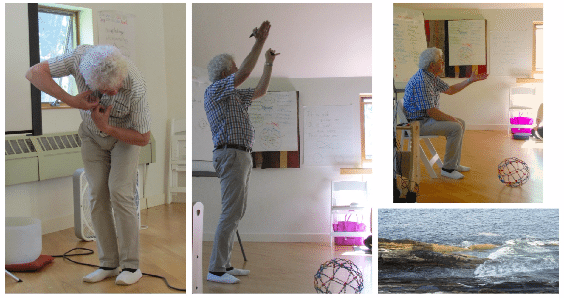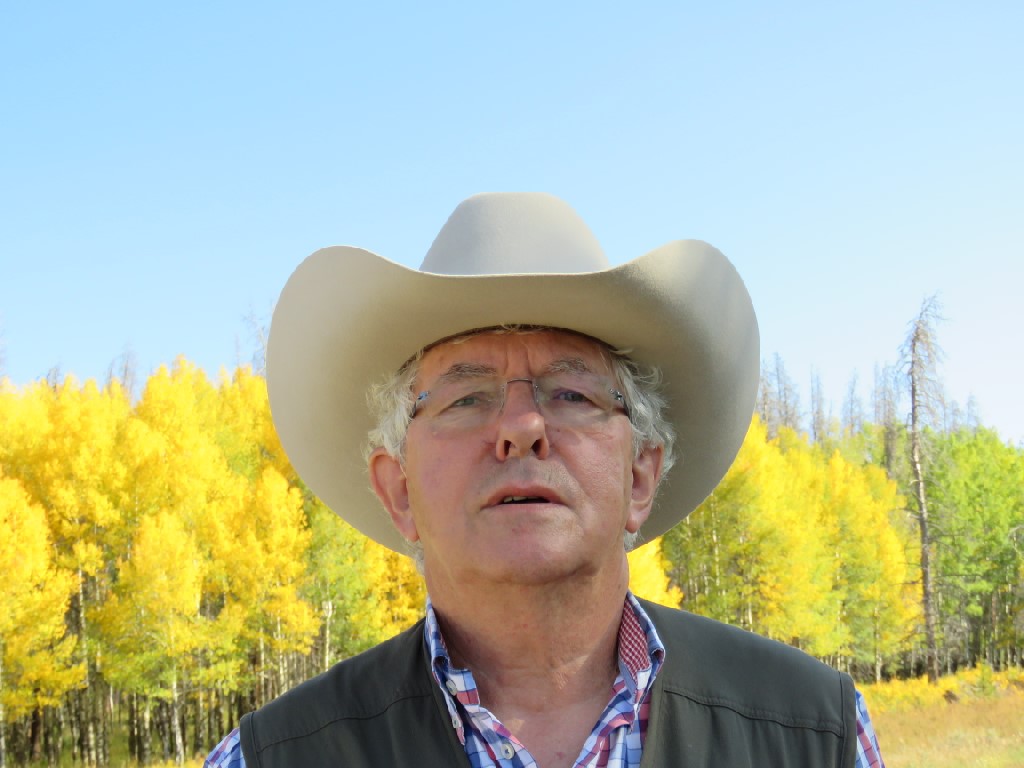|
What do we do when we are
embryo?
As a kind of "brainless"
being, the human embryo is a challenge for those who search for spirit
in the human existence and body. Spirit in this context is defined as
everything that modern science - exclusive of modern genetics,
neurophysiology and psychology - qualitative qua to deny as non-evident
and therefore non-existent quality. Jaap van der Wal tries in this
course to go on the search for spirit in man and nature following
another scientific pathway; which means searching for sense, meaning and
the goal of our existence. The question what are we actually doing
when we are embryo? is only relevant for the embryologist who is on
the search for such qualities. An effort is made to come to the essence
of spiritual being of the human embryo and to bring the relationships
between spirit, soul, and body to light. New perspectives are presented
with an outlook on a polarity morphology, threefoldness of the human
body, on micro-cosmos and macro-cosmos, human existence in development and
incarnation. The human body is considered here as a dynamic process that
only can be understood as a living organism. Effort will be made to
overcome the modern poor philosophical "nothingbutterism" (the human
being is nothing else than just material processes and software and so
on) and to extend it to a real holistic and spiritual human biology. The
approach that will be followed is a scientific one; i.e. the
Goetheanistic phenomenology and is based upon our primary perception and
experiencing of our reality. This means NOT "I think therefore I am, but
"I experience myself as a thinking, feeling, and willing being;
therefore I am and exist in, by, and thanks to this body."
Content of the course
Human embryonic development deals with what
could be considered as "still functioning in forms;" meaning that the
gestures of growth and development that the human embryo is performing
could be interpreted and understood as human behavior, and as a type of
pre-exercising of what later on will appear as physiological and
psychological functions. It appears as if the embryo, and therefore the
human being, is in a type of empathetic equilibrium between antipathy
and sympathy with the environment and the world. This polarity seems to
be essential for the human being and suggests it is an indication of the
twofoldness of spirit and matter. Phenomenological embryology helps us
to see that the human body is an expression of body as well as mind
(dynamic morphology). The search is made for possible answers to
questions like Where do we come from? and What is the human
being? The approach practiced here leads to a type of process
morphology that may overcome the Cartesian anatomy: a real morphology of
mind and body with the whole body as expression of the human soul. The
gestures of growth of the embryo could be interpreted as a type of echo
of the development of mankind (evolution): becoming human and the
evolution of humanity, biography and biology come together. The embryo
also provides insight in the laws and principles of human development.
The way in which the human shape gets its form in the prenatal phase is
an expression of the essential feature that the human being is a citizen
of two worlds i.e. mind AND matter, heavens AND earth, and that in this
tension field the human being develops (embryology) and manifests itself
(morphology).
The intent of the course is
to allow the attendees to participate in the mighty processes that
create the basis for the existence of each human individual, and to do
this not only by means of intelligence (head) had but also with feeling
(heart). With the "spectacles" of the phenomenology is possible to "see"
a spiritual perspective in man and in becoming man based upon the
scientific facts of the prenatal life. This approach teaches that we
human beings may be considered as beings that by means of conception,
embryonic development, and birth create incarnations of mind (spirit)
into a body.
Prior
knowledge of embryology is not required. Diagrams, illustrations, and a
reader will be available. The lectures and discussions will be
alternated with practical exercises like form drawing and bodily motions
(eurhythmy).
Jaap
van der Wal was born in 1947 and
graduated from medical school in 1973, specializing in anatomy and
embryology and lecturing in these disciplines at the medical schools of
the universities of Utrecht and Maastricht (The Netherlands) and at
various paramedical training colleges (such as for physiotherapy,
nursing, and midwifery). He also worked in medical research. He received
his PhD for a dissertation on human proprioception (sense of posture and
locomotion), which concerned his other main interests, i.e. the
questions: What moves us? What motivates us to move? In this
context in recent years he became more and more involved in research
regarding function and meaning of the fascia and connective tissue in
the human body, resulting in several presentations at the 2nd
International Fascia Congress in Amsterdam and related publications in
journals. In this work he continued with the trans-anatomical thinking
that began during his first period of research during the 1980s and
1990s, in which he and his colleagues introduced a functional
description of the fascia as an architecture of connecting and shaping
space by means of connective and muscle tissue constituted by dynaments
rather than muscles and so-called ligaments.
Jaap's main interest, however, is the development of the human embryo
along with everything related to it, such as evolution and genetics, and
all of that in context with the image of man and philosophy of science.
He regularly publishes articles on these subjects, and was co-editor of
the report Zit er toekomst in ons DNA? (Is there future in our
DNA?), 1993, and of En toen was er DNA (And then there was DNA),
1999.
Important sources of inspiration are the anthroposophy of Rudolf Steiner
and the work of Jan Hendrik van den Berg, Dutch professor in
phenomenological history (metabletics), and other phenomenological
philosophers. But most of all it is by applying the phenomenological
approach of Goethe; which Jaap uses this to bridge the chasm between
spirituality and the humanities on the one hand and positivistic natural
science on the other hand. Above all, Jaap employs this method on the
domain of the pre-natal development of the human being.
A third area, which has had his interest for many years, is the human
body. Jaap published Lost Death, a critical essay about the
current image of the body in medical science. He more recently worked as
a senior lecturer for anatomy and embryology at the University of
Maastricht (The Netherlands) and as a freelance teacher at various
training courses in the field of alternative or complementary medicine,
such as yoga-schooling, schooling for art therapy and ante-natal
support, moreover the training in osteopathy, craniosacral therapy, and
polarity medicine. He gives seminars (Embryo in Motion) for laymen as
well as for professionally interested people as doctors, midwives, and
other therapists, and to an increasing extent to professional groups as
including osteopaths, craniosacral therapists, and trauma therapists.
For those latter activities more time became available beginning in 2005
when he became a part-time lecturer with the university Maastricht,
which gave him time to establish the company Dynamension. In that
context he has traveled all over the world with the project Embryo in
Motion, searching for people who want to hear about what we actually are
doing when we are embryo. On the search for spirit in our (embryonic)
existence, via the phenomenological approach of the dynamic morphology,
he found a bridge between science and spirituality. Via his network
Embryo in Motion, Dr. van der Wal tries to propagate this view as an
"embryologist on the search for spirit." In March 2012 he retired from
the university and in the context of Dynamension, is now am able to
completely dedicate his time to his work on Embryo in Motion.
|
Jaap has already
prepared for his Texas course by having a new hat fitted. There
is a new sheriff in town ; ).
The cost of the class is $850. Please pay in full to register. |
 |
|

